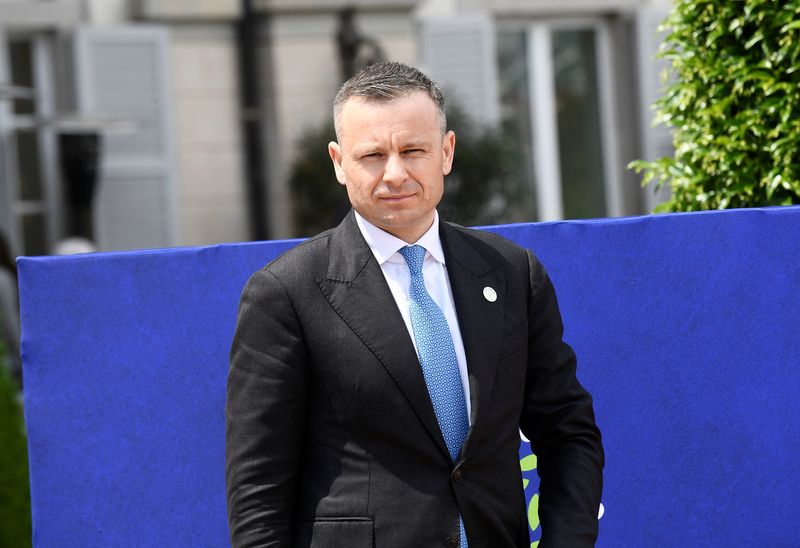By Marc Jones
LONDON (Reuters) – Ukraine announced on Wednesday that international bondholders had formally approved its plan to restructure over $20 billion of debt amid its ongoing war with Russia.
Kyiv said those holding over 97% of its debt had done so by the required deadline, meaning the restructuring could go ahead.
It is set to slash the face value of Ukraine’s international bonds by more than a third and keeps it onside with its key support provider, the International Monetary Fund, which had stipulated the writedown was necessary to make debt levels sustainable.
While it will require the end, or at least a significant easing, of the war for Ukraine to be able to borrow from international capital markets again, finalising the restructuring was a “crucial step”, Ukraine’s Finance Minister Serhiy Marchenko said.
It will “ensure Ukraine maintains the budget stability needed to continue financing our defence”, he added, and was an important move toward restoring long-term economic stability.
The restructuring is the second in a decade Ukraine has been forced to undertake following a Russian invasion, the previous one in 2015 following Russia’s annexation of Crimea.
This one had required the backing of at least two-thirds of Ukraine’s bondholders, along with a simple majority of more than half in each of the individual series of bonds involved.
The process has moved at breakneck speed, taking just four months to negotiate, and replaces a two-year bond payment moratorium Ukraine was granted in the summer of 2022 that is now expiring.
Yuriy Butsa, the head of Ukraine’s debt agency and a key figure in the negotiations, said the restructuring was not like those in other countries.
“This has not been driven by any unsustainable economic policies,” he told Reuters. “It is driven solely by the Russian aggression against Ukraine,” adding that it also had been one of the quickest debt restructurings in history.
The Group of Creditors of Ukraine – the country’s bilateral lenders includes Canada, France, Germany, Japan, Britain and the United States – welcomed the agreement.
“The swift implementation of the exchange demonstrates substantive support for the government and people of Ukraine by providing substantial debt relief,” the group said in an emailed statement.
As part of the deal, bondholders are accepting a 37% writedown, or “haircut”, to the face value of their holdings, saving Ukraine $11.4 billion over the next three years – the duration of Kyiv’s current IMF programme.
In return, they get new bonds worth 40 cents of their original claim which restart interest payments immediately. The payments will start at 1.75% before rising to 4.5% in 2026, 6% in 2027 and to 7.75% from 2034 onwards.
They also will receive a bond worth 23 cents that will not pay interest until August 2027, but will increase to 35 cents if Ukraine’s economy is outperforming IMF targets by at least 3% come 2028.
The new bonds are expected to start trading on Aug. 30, once the final details of restructuring settle.
STILL STRAINED
Despite the debt relief, Ukraine’s finances are set to remain heavily stretched by its war effort. It remains under constant attack from Russia, while over the last month it has also launched a surprise counter-offensive into Russia’s Kursk region.
The now-agreed restructuring only covers its international market bonds, on which Ukraine owes $24 billion – or around 15% – of an overall debt load of more than $140 billion.
Ukrainian officials also warned this month that the country could need more money than previously expected to fill the gaps in its budget.
Kyiv still hopes to restructure another $2.6 billion worth of GDP warrants – instruments linked to the country’s growth – in the coming months, while its “official creditors” – Western governments and multilateral lenders – are expected to come up with a relief plan for their loans next year too.
The IMF and a group of core bondholders that had negotiated the details of the deal with Ukraine did not immediately comment on its approval when contacted by Reuters.

